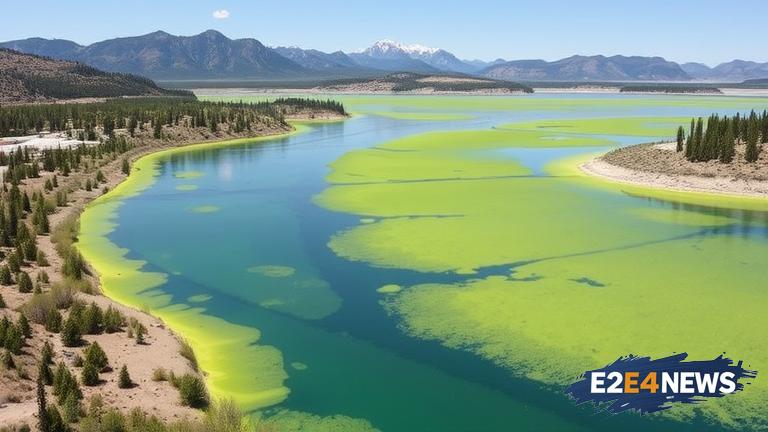The Idaho Department of Environmental Quality has issued a health advisory for several reservoirs along the Snake River due to the presence of toxic algae. The advisory, which was issued in response to high levels of toxic cyanobacteria, warns people to avoid contact with the water and to keep pets and livestock away. The affected reservoirs include American Falls Reservoir, Ririe Reservoir, and Twin Falls Reservoir, among others. The toxic algae blooms are caused by an overgrowth of cyanobacteria, which can produce toxins that are harmful to humans and animals. Exposure to these toxins can cause a range of health problems, including skin irritation, allergic reactions, and liver damage. In severe cases, it can even be fatal. The health advisory is in effect until further notice, and officials are urging people to exercise caution when recreating in or around the affected reservoirs. The Idaho Department of Environmental Quality is working to monitor the situation and provide updates as necessary. In the meantime, people are advised to avoid swimming, wading, or engaging in other water activities in the affected areas. Pet owners are also warned to keep their animals away from the water, as they can be particularly susceptible to the toxins. The toxic algae blooms are not only a threat to human health, but also to the environment and wildlife. They can deplete the oxygen in the water, causing fish and other aquatic organisms to die. The blooms can also affect the local economy, as they can impact recreational activities such as boating and fishing. The Idaho Department of Environmental Quality is working to identify the causes of the toxic algae blooms and to develop strategies for preventing them in the future. This may involve reducing nutrient pollution, which can contribute to the growth of cyanobacteria. The department is also working to educate the public about the risks associated with toxic algae blooms and the steps that can be taken to prevent them. In addition to the health advisory, the Idaho Department of Environmental Quality is also providing guidance on how to safely recreate in areas affected by toxic algae blooms. This includes avoiding areas with visible algae blooms, washing hands and clothing after contact with the water, and avoiding the consumption of fish or other aquatic organisms from affected areas. The department is also urging people to report any sightings of toxic algae blooms to the authorities, so that they can be monitored and addressed. The toxic algae blooms in Idaho’s Snake River reservoirs are a reminder of the importance of protecting our water resources and the need for continued vigilance in monitoring water quality. By taking steps to prevent nutrient pollution and to educate the public about the risks associated with toxic algae blooms, we can work to prevent these types of events in the future. The health advisory is a precautionary measure, and officials are urging people to take it seriously. The safety of the public and the environment is the top priority, and every effort is being made to mitigate the risks associated with the toxic algae blooms. The Idaho Department of Environmental Quality will continue to monitor the situation and provide updates as necessary. In the meantime, people are advised to stay informed and to take the necessary precautions to stay safe.
